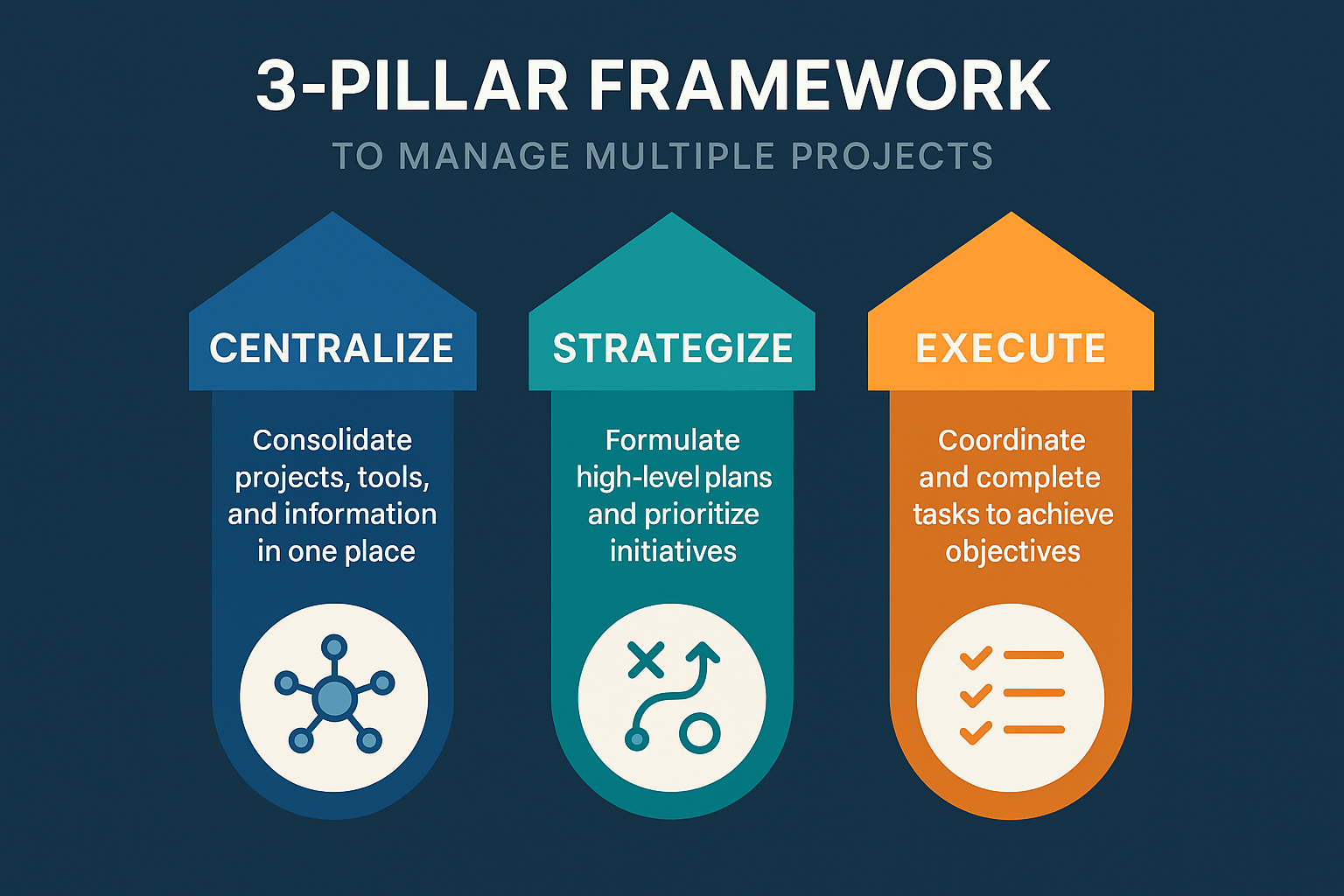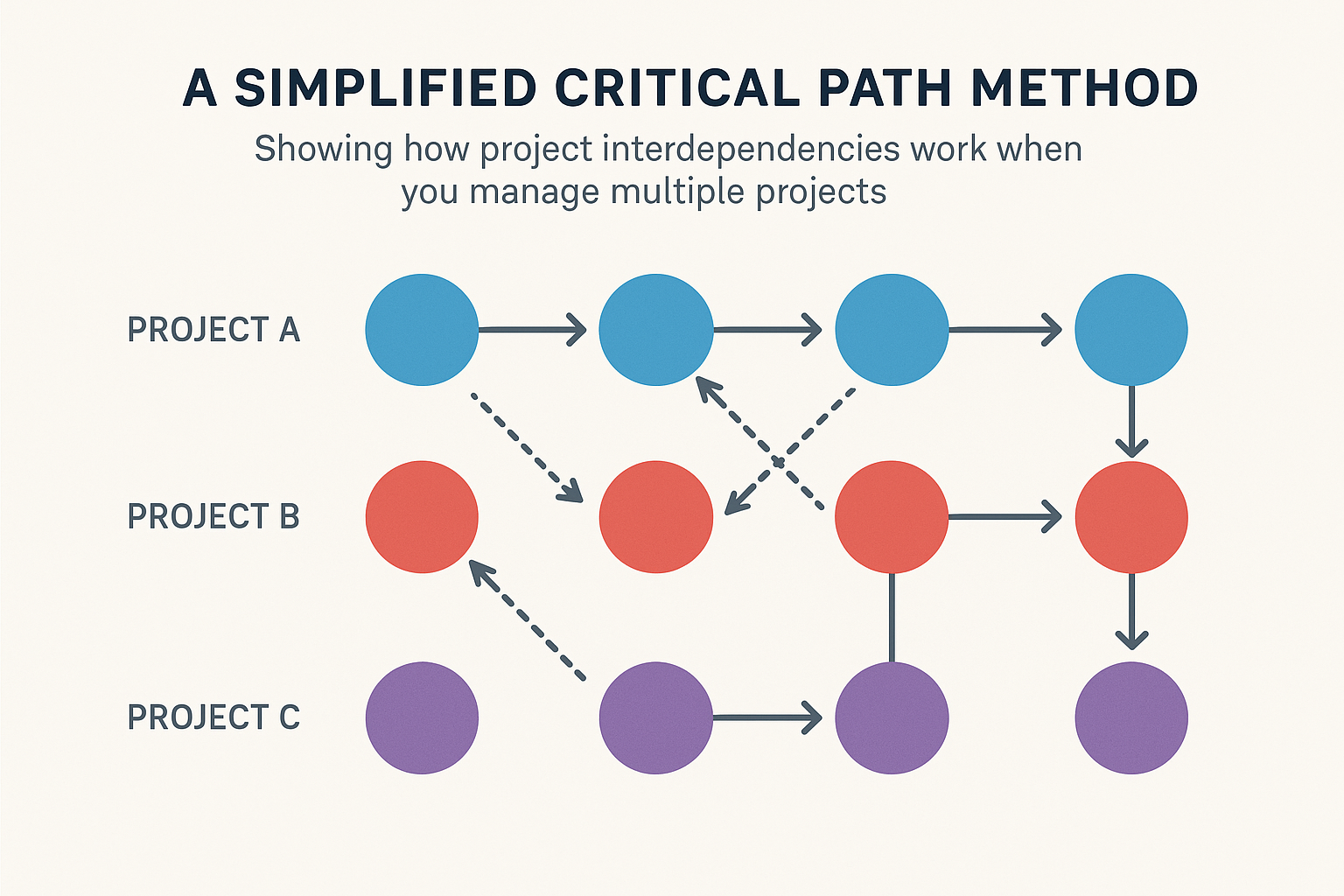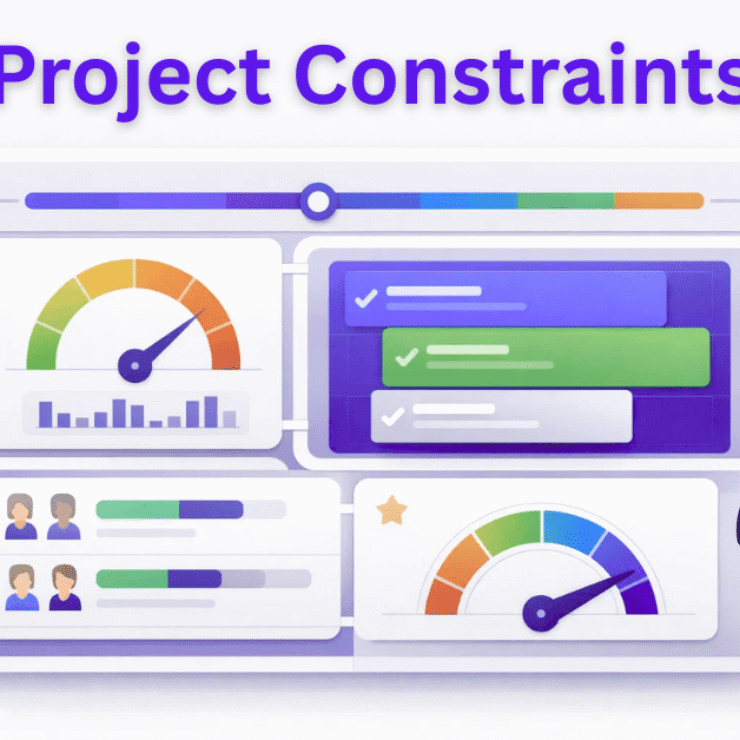Are you living in a world of endless browser tabs and a calendar that looks like a game of Tetris gone wrong? You jump from a client call on one project to a budget review on another, ending your day feeling exhausted but with a nagging sense that nothing truly moved forward. This isn’t a personal failing; it’s the reality of modern work. The ability to effectively learn how to manage multiple projects has evolved from a niche skill for certified project managers into the single most critical competency for productivity and sanity in today’s workplace.
This guide isn’t about working harder or longer hours—it’s about giving you a robust system and the tactical plays you need to reclaim your focus, eliminate the chaos, and drive real, measurable results across the board. If you’re serious about learning how to manage multiple projects without the burnout, this is your blueprint.
The Root of the Problem: Why Juggling Projects Drains Your Brain
This process isn’t free. It comes at a cost.
According to a landmark study by Gloria Mark at the University of California, Irvine, it can take over 23 minutes to regain a state of deep focus after a single interruption. Now, multiply that by the number of times you switch between projects in a typical day. The result is staggering. This cognitive tax is the primary reason why attempts to learn how to manage multiple projects without a system often fail. This constant mental whiplash also leads to “attention residue,” where thoughts about the previous task linger and prevent you from giving your full attention to the current one. This leads to higher error rates, decreased work quality, and increased stress. The ultimate goal of effective multiple project management is to minimize this cognitive tax and create an environment where focused work can flourish.
The 3-Pillar Framework to Managing Multiple Projects

Pillar 1: Centralize – Create Your Command Center
You cannot effectively manage what you cannot see. The first and most crucial step is to get every task, deadline, dependency, and project detail out of your head, out of scattered notebooks, and out of your inbox. This command center is the foundation you need for learning how to manage multiple projects with confidence.Build a Master Project List
Before you dive into the weeds of individual tasks, zoom out. Create a high-level inventory of every single project you are currently responsible for. This can be a simple spreadsheet or a dedicated portfolio management tool. The key is consistency. Your list should include, at a minimum:- Project Name: A clear, concise identifier.
- Primary Goal: A one-sentence summary of what success looks like.
- Key Stakeholder(s): Who needs to be kept informed?
- Hard Deadline: The final due date.
- Current Status: Use a simple RAG status (Red, Amber, Green) or terms like “On Track,” “At Risk,” “On Hold.”
- Priority Level: A simple High, Medium, or Low rating.
Pillar 2: Strategize – How to Prioritize and Manage Multiple Projects
With everything centralized and visible, you can stop reacting to the latest urgent email and start making intelligent, strategic decisions about where to invest your time and energy. This is where you separate the truly important from the merely loud.Triage Your Tasks with the Eisenhower Matrix
This timeless framework, famously used by President Dwight D. Eisenhower, is a game-changer for prioritization. Go through the tasks for all of your projects and categorize them into four quadrants:- Urgent & Important (Do First): These are your top priorities. A critical bug fix, a deadline for a major client, etc.
- Important, Not Urgent (Schedule): This is where strategic work lives. Planning the next project phase, professional development, relationship building. Schedule dedicated time for these to ensure they don’t get pushed aside.
- Urgent, Not Important (Delegate): These are tasks that need to be done now but don’t require your specific expertise. Answering routine inquiries, scheduling meetings. Delegate them if possible.
- Not Urgent & Not Important (Eliminate): These are distractions. Remove them from your list without guilt.
Apply the Pareto Principle 80/20 Rule
Pareto principle 80/20 rule states that for many events, roughly 80% of the effects come from 20% of the causes. When you need to manage multiple projects, it means you must ask yourself for each one: “What are the 20% of activities that will yield 80% of the results?” Identify these high-leverage tasks and make them your primary focus. For a website launch, the 20% might be securing key testimonials and optimizing the checkout page, while the 80% is arguing over minor font changes. Focus your best energy on the 20%.Clarify Scope with the MoSCoW Method
Another powerful tool for project management for multiple projects is the MoSCoW method. It helps you and your stakeholders agree on what’s truly essential. Categorize project requirements into:- Must-Have: Non-negotiable features for the project to be considered a success.
- Should-Have: Important, but not vital. The project is still successful without them, but they add significant value.
- Could-Have: Desirable but not necessary. These are nice-to-haves that will only be included if time and resources permit.
- Won’t-Have (This Time): Features that have been explicitly excluded from the current project scope. This is critical for preventing scope creep.
Pillar 3: Execute – Win Your Week with Discipline
A brilliant plan is worthless without consistent, disciplined action. A disciplined approach to execution is what separates those who struggle and those who successfully learn how to manage multiple projects. This final pillar is about structuring your time and creating feedback loops to ensure you make steady, focused progress on your most important work.Block Out Your Time
A simple to-do list is a recipe for overwhelm. Instead, give every important task a home on your calendar. This powerful technique, known as the time blocking technique, involves scheduling specific blocks of “deep work” for specific projects. For example, “Monday 9 AM – 11 AM: Work on Project Alpha Marketing Plan.” This protects your focus, fights procrastination, and transforms your intention into a concrete plan.Establish a Rhythm of Review
Your system must be dynamic, not static. This review is the heartbeat of your system for learning how to manage multiple projects. At the end of each week, conduct a 30-minute “Weekly Review.” During this non-negotiable meeting with yourself, you’ll update your project statuses, celebrate wins, identify bottlenecks, adjust priorities based on new information, and plan your time blocks for the week ahead. Ask yourself:- What did I accomplish this week?
- What roadblocks did I hit?
- Have any priorities shifted?
- What is the single most important thing I need to do next week for each project?
Actionable Strategies for How to Manage Multiple Projects
- Tip 1: Theme Your Days for Deep Focus: If your schedule allows, dedicate specific days or at least half-days to a single project or a single type of work. For example, “Marketing Mondays,” “Finance Fridays,” or “Client Call Tuesdays.” This drastically reduces context switching, allowing you to stay in one cognitive mode for an extended period, leading to higher quality work in less time.
- Tip 2: Batch Similar, Shallow Tasks: For smaller tasks that don’t require deep focus, group them together. Dedicate a specific 30-minute block each day to “process communications”—answer non-urgent emails, reply to Slack messages, and return calls all at once, rather than letting them interrupt you throughout the day.
- Tip 3: Unify Your Communication Channels: One of the biggest sources of stress is information chaos. For each project, designate a single, official channel for all substantive communications and file sharing. Be ruthless about redirecting conversations back to this central hub.
- Tip 4: Embrace Asynchronous Communication: Not every question requires an immediate answer or a meeting. Encourage a culture of asynchronous communication, where team members share updates and ask questions in a project management tool. This allows everyone to engage on their own schedule, preserving focus for all.
- Tip 5: Standardize Everything You Possibly Can: Repetitive tasks drain mental energy. Create simple, standardized templates for project briefs, status reports, risk logs, and meeting agendas. Standardization is a secret weapon when you need to learn how to manage multiple projects at scale.
- Tip 6: Set Aggressively Realistic Expectations: Master the art of communicating your bandwidth and priorities to stakeholders. It is always better to under-promise and over-deliver. Use effective time management tools and techniques to help you make more accurate estimations.
- Tip 7: Protect Your “Deep Work” Time at All Costs: In a world of open offices and constant notifications, deep work doesn’t happen by accident; it happens by design. Block off 90-120 minute chunks in your calendar for your most cognitively demanding tasks. Turn off your phone, close your email and chat apps, and let your team know you are in a “focus block.”
How to Manage Multiple Projects as a Project Manager
Advanced Resource and Capacity Planning
Your most important job is to protect your team from the same burnout you’re trying to avoid. You cannot simply assign tasks without understanding their current workload. Use resource management software to get a clear, data-driven view of who is working on what and what their capacity is. Look for signs of burnout: missed deadlines, decreased quality, or lack of engagement. This is essential for setting realistic project deadlines.Mastering Interdependencies Across Projects

Stakeholder Management in a Multi-Project World
A key challenge of knowing how to manage multiple projects is that each project has its own set of stakeholders, and to them, their project is the most important one. Your job is to manage these expectations transparently. Develop a simple, templated communication plan. A weekly email summary with the RAG status for all your key projects can keep everyone informed at a high level, reducing the number of individual “just checking in” requests you receive.So, How Many Projects Can a PM Manage at Once?
This is the million-dollar question every PM and manager asks, and the honest answer is: it depends. There is no magic number. A 2023 “State of Project Management” report by Wellingtone found that the average number of projects a PM handles simultaneously is between 2 and 5. However, this number is heavily influenced by several key factors:- Project Complexity & Size: Two highly complex projects can be far more demanding than ten simple ones.
- Team Maturity & Autonomy: A seasoned, self-sufficient team requires less hands-on management.
- Organizational Support: The quality of your tools and administrative support play a huge role.
Also Read
Agile Project Management
Project Management Guide
S Curve in Project Management
Top Web Based Project Management Softwares
Critical Path Method
Conclusion
By implementing the 3-Pillar Framework of Centralize, Strategize, and Execute, you fundamentally shift your relationship with your work. You move from a reactive state of constantly fighting fires to a proactive state of calm, confident control. You will not only deliver higher quality work across all your commitments but also reclaim the mental clarity and energy you’ve been losing to the relentless chaos of the modern workplace. You will stop being a juggler and become the orchestrator.
Ready to put these principles into action? The right software can make all the difference for those who want to master how to manage multiple projects. Explore tools designed specifically for this challenge and find the one that fits your new, organized workflow.



